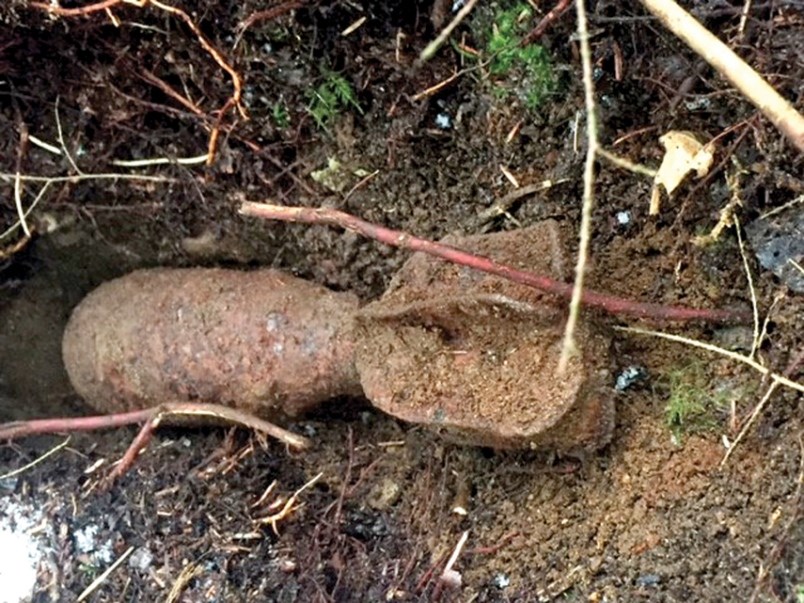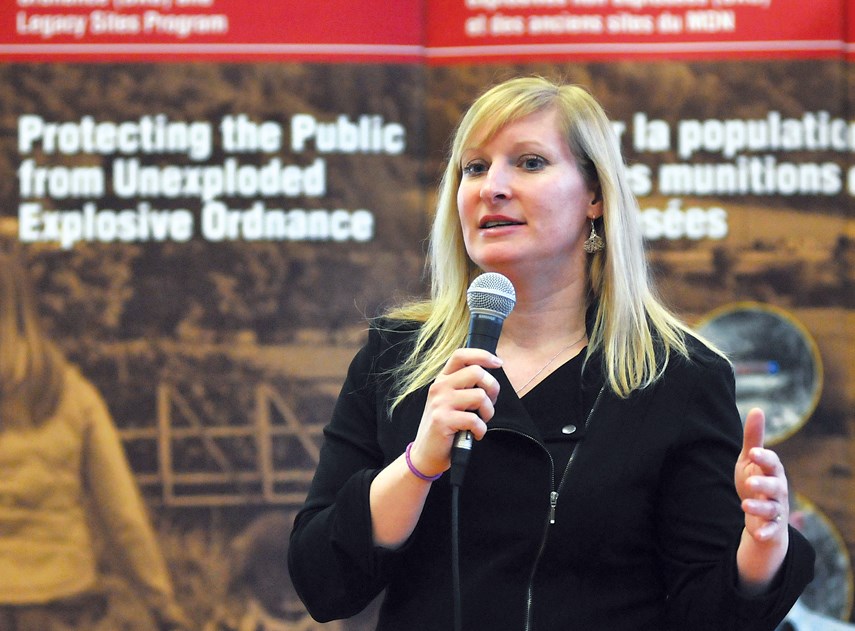If you see some folks dressed up like a bomb squad out on the trails on the Blair Rifle Range lands, give them a wide berth.
The Department of National Defence has sent explosives detection specialists to survey the area for the next six weeks after an inspection earlier this year found an unexploded mortar on the site.
The land was used for military training from the 1930s to the 1960s. Today, the area is co-owned by the Canada Mortgage and Housing Corp. and the province. The two sides recently struck an agreement to allow recreational use on the site with maintenance being taken on by the North Shore Mountain Bike Association. But the Department of National Defence has had the property on its list of “legacy” sites to check for unexploded ordnance.
Official records were sketchy as to whether grenade and mortar training was ever done there. Local historian Donna Sacuta’s research found former soldiers who recalled using explosives on the property. That was confirmed in late February when an undetonated mortar turned up beneath the soil.
National Defence officials held a public information session Wednesday night to keep the community and trail user groups updated on the plans. Anyone who ventures onto the lands between now and May 18 can expect to see more technicians out walking the 30-plus kilometres of trails with metal detectors.
“We’re going to concentrate most of our focus on the recreational trails,” said Debbie Nicholls, environmental program specialist with the Department of National Defence. “Now they’ll also be expanding their search 0.5 metres on the side of the trails.”
Though she was skeptical at first, Sacuta said the additional survey period should turn up answers.

“I have a pretty positive impression of the work DND is doing. They seem to be on top of the game,” she said. “They seem to have a plan and they claim to have the top-of-the-line technology.”
Top of mind for some attendees was whether searching for forgotten bombs was just a precursor to developing the property, Sacuta said.
“They assured the audience that that is not in the cards. So that’s good,” she said. “It’s going to be generations before that land is able to be used for anything other than what it is now.”
Cooper Quinn, vice-president of the NSMBA, said his group supports seeing the grounds swept for explosives once more.
“They found a mortar. That’s not something I want anyone other than DND to find,” he said.
Quinn is advising his group’s membership to give the explosives technicians all the space they need.
“I think one of the key takeaways from last night’s presentation is they’re pretty comfortable with the risk levels in terms of people continuing to use the trails but don’t recommend people go out digging or building fires or stuff like that,” he said. “If there are strange people wandering around the woods with metal detectors, they’re probably not looking for gold. They’re probably looking for unexploded ordnance and trying to keep you safe.”
In the meantime, if anyone does happen across anything that looks potentially dangerous, the message is simple, Nicholls said. “Turn around and leave the area the same way you came in and call 911.”
National Defence is expected to produce a final report once the survey is complete and present it to the public this summer or fall.
Sacuta said she’ll continue to push all parties involved to remember the site for its historical significance.



